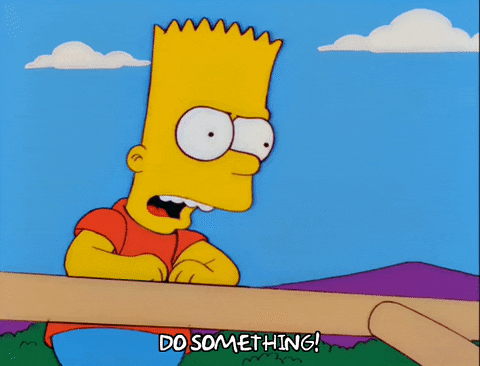Steve Krug’s classic book about web usability, Don’t Make Me Think, has the perfect title. It encapsulates what you need to achieve with your calls to action. The closer you get to telling your audience the actions they can take in the clearest, most captivating way, the greater the chance your marketing succeeds.
In digital marketing, every webpage, email, ad, or social post should guide the audience toward the next step. That next step is your call to action (CTA). It’s the key to turning passive visitors into active participants, subscribers, and best of all, customers.
Whether you aim to grow your email list, sell a product, or drive traffic to a blog post, crafting a powerful CTA is a task worth special attention. In this article, we’ll explore what a call to action is, why it matters, and how to create one that converts.

What Is a Call to Action in Digital Marketing?
A call to action (CTA) tells your audience what they can do next. It’s typically a short phrase that appears on buttons, links, or banners. Some common ones you see every day are “Buy Now,” “Learn More,” or “Subscribe Today.”
CTAs are interactive, so when the user clicks or taps on it, the technology working behind the scenes produces the desired effect. Thus, calls to action are unique in that they’re just as much about functionality as they are about communication.
CTAs appear across digital marketing touchpoints, including:
- Website landing pages
- Emails
- Social media posts
- Online ads
- Blog content
While the format may vary, the goal is always the same: guide the user toward a desired action and empower them to do it.

Why Strong CTAs Matter
Although your business is likely using calls to action, it could be time to have another look. Adding more CTAs and rewriting and redesigning the ones you have is a fairly small undertaking with a huge ROI.
A well-crafted CTA can significantly improve your campaign performance by:
- Increasing conversion rates: People are more likely to take immediate action when all they need to do is click a link or tap a button.
- Improving user experience: Clear direction prevents indecision and confusion and enhances navigation. For example, if a user is required to go to another page when they’re ready to buy, you could lose them.
- Driving business goals: Whether it’s lead generation, sales, or engagement, the right CTAs ensure businesses continue to thrive.
- Reducing bounce rates: Strong CTAs encourage users to stick with their journey. Keeping them engaged lowers the possibility they’ll exit your site.

Common CTA Formats and Designs
When people think of CTAs, they often visualize a button. That’s the key component marketers love, but it helps to go over all the options in your toolkit so you recognize opportunities to use them.
There’s no one-size-fits-all approach to CTAs. Here are some popular formats:
Buttons
The most common and effective format. Big, colourful buttons stand out visually and grab people’s attention like nothing else. They are easy to click on any device.
Contextual Links
These are hyperlinked text snippets within your content, such as “check out our guide to social media strategy.” They feel like a natural addition and can improve SEO. Links also allow you to give your audience multiple options as your content progresses, so they’re not overwhelmed.
Banner and Video Ads
Banners are classic, graphically rich ad formats that are placed in headers, sidebars, or footers. They’re ideal for high-traffic or visual environments. Video ads are attention-grabbing but can also be an unwelcome distraction, particularly when sound is on by default.
Pop-Ups
While sometimes seen as intrusive, pop-ups work well when timed correctly (e.g., exit intent or after scroll). These are commonly used to offer users special discounts on ecommerce sites. If the offer is enticing, people won’t mind the interruption.
Slide-Ins or Carousels
Slide-ins or carousel ads appear in the main column on the page, sitting nicely with content while not blending in. This has become a preferred format to banners because they’re placed where users direct most of their attention.

How to Create a CTA That Converts
This is where great CTAs are made. A compelling call to action needs more than flashy design. It needs strategy and wordsmithing. Here’s how to build one that gets results:
1. Be Clear and Specific
Avoid vague language. Use action verbs that clearly communicate what the user should do. Instead of “Click Here,” try “Download the Free Guide.”
If you can introduce a little novelty in your choice of words, great, but always choose clear over clever.
2. Use Strong Action Words
Since CTAs are used to inspire people to act, it’s no surprise that action words are incredibly powerful in this application. Put yourself in the shoes of your audience and think about how to influence them to desire what you’re offering.
Start with verbs like:
- Get
- Start
- Try
- Book
- Join
- Discover
- Learn
These words trigger a sense of urgency and engagement.
3. Create a Sense of Urgency or Scarcity
It’s an aspect of human nature that never changes. People value offers more when they need to take action now, so they don’t miss the boat.
Phrases like “Limited Time Offer” or “Only 3 Spots Left” tap into FOMO (fear of missing out) and encourage quicker action. Studies have shown that offers with an expiration date can boost the likelihood of purchase by as much as 33%.

4. Match CTA to Customer Intent
Marketers and leaders alike want their audience to buy now, but pushing for the sale too soon can backfire. Think about how far along your audience is in the buyer’s journey. Are they in the awareness, consideration, or decision stage?
Align the CTA with where the user is in the buyer’s journey:
- Top of Funnel: Use “Learn More” or “Read the Guide.”
- Middle of Funnel: Try “Start Free Trial” or “Get the Demo.”
- Bottom of Funnel: Use “Buy Now” or “Claim Your Offer.”
5. Optimize Placement and Design
Placement is everything. When it comes to your content, you need to anticipate when your audience will be inspired to move forward.
Position CTAs where they’re easy to find:
- Above the fold
- After valuable content
- In navigation menus
Use contrasting colours, bold fonts, and whitespace to make CTAs stand out. Less is more!
Finding the right colour that ties in with your brand can significantly boost conversion rates. Consider that just changing the CTA colour can increase sales by over 35% (OptinMonster).
6. Test and Refine
You may have a great feeling about your choices when your CTA is complete, but intuition is no replacement for research. Testing can often reveal surprising results.
A/B test different versions of your CTA. Try changing any combination of the following:
- Button text
- Colours
- Placement
- Timing
Even small changes can lead to major performance improvements. The more traffic you get, the more critical fine-tuning becomes.

Examples of Effective Calls to Action
Looking for inspiration before you get started?
Effective CTAs aren’t surprising. Most people come across them every day. Familiarity can build trust, and if you manage to add just a pinch of novelty, you’ve really got something.
Here are examples that are useful in a ton of circumstances:
Direct Action CTAs
These encourage an immediate transaction or sign-up.
- “Start Your Free Trial”
- “Add to Cart”
- “Book a Consultation Today”
Informational CTAs
Guide users to more content or learning resources.
- “Download the Full Report”
- “Read Our Success Stories”
- “Explore Our Blog”
Social Sharing CTAs
Encourage users to spread the word.
- “Share This Post with a Friend”
- “Post This Tip”
- “Follow Us for More Tips”
Feedback CTAs
Ask users to leave feedback or write reviews.
- “Rate Your Experience”
- “Tell Us What You Think”
- “Leave a Review on Google”
Personalized CTAs
Tailor the CTA based on user behavior, name, or location.
- “[Insert first name], Unlock Your Free Strategy Session”
- “Welcome Back! Continue Where You Left Off”
- “Get Your Customized Plan”

Conclusion
A great call to action isn’t just a button or phrase. It’s a bridge between attention and action.
When crafted strategically, CTAs boost conversions, improve user experience, and move people through your marketing funnel with purpose. Although there are no magic bullets in marketing, optimised CTAs are as close as you can get.
To sum it all up and leave you primed to create CTAs that convert, here are three key points to remember:
- Use clear, action-oriented language.
- Match your CTA to the user’s journey.
- Choose the right format and test relentlessly.
Whether you’re writing an ad, building a landing page, or sending an email, always ask: What do I want the user to do next? Then, make that action sound irresistible.
Enjoy the process and best of luck with your latest digital marketing project. If you need help with the technical or creative aspects of making the perfect calls to action, contact the team at Nuflux Media.

